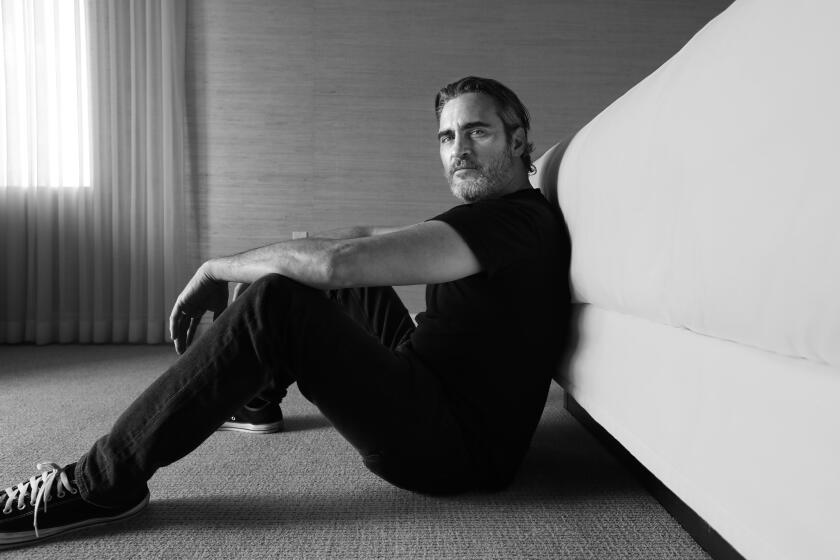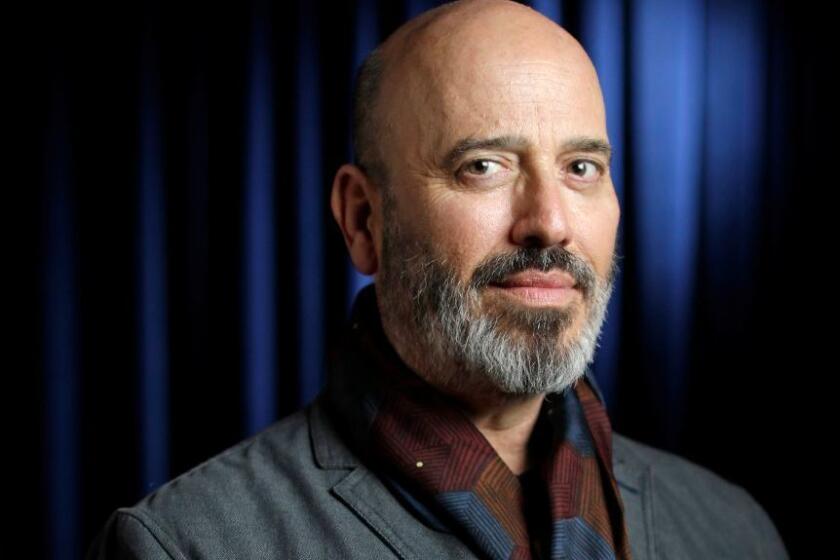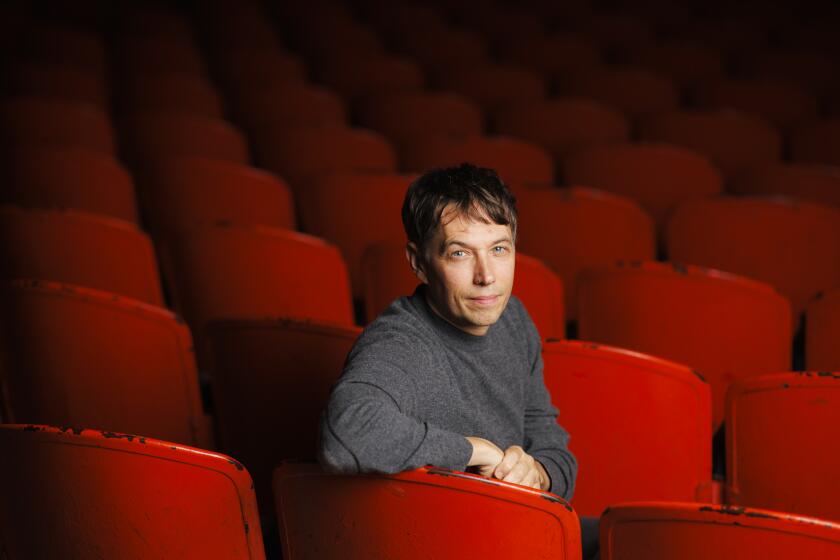Nuance and a muted palette unite costumes and set design for ‘Joker’
When you look beyond Joaquin Phoenix’s fixating performance in Todd Phillips’ “Joker,” you’ll start to see that the ominous world around him is subtly connected to the dynamic arc of his character.
It was production designer Mark Friedberg who helped detail the color palette and texture of the allegory set in the 1980s where a struggling nobody named Arthur Fleck, who lives with and takes care of his aging mother (Frances Conroy), spirals down an uncontrollable path of self-destruction.
“When I first talked with Todd, my question to him was, ‘Are you all in?’” says Friedberg, whose work includes “If Beale Street Could Talk” and “Wonderstruck.” “My heart is generally in the indie world and when I read the script, I thought if it was made without compromise and risked failure, it could be a very strong movie. Todd looked at me and said, ‘That’s exactly where I’m going.’”
The intensely private Joaquin Phoenix opens up about his early reluctance to discuss the violence within ‘Joker.’
The script — from Phillips and Scott Silver — described a “crumbling city piled high with trash,” notes Friedberg. “It’s a harsh, gritty world that’s dehumanizing and impacts Arthur in such a profound way, so in defining Gotham, it needed to reflect a version of the character.”
Friedberg settled on the South Bronx to depict Arthur’s neighborhood of Otisburg for its hilly topography that’s as if “San Francisco and New York had a baby.” He mapped all of Gotham, including its elevated subway, to chart Arthur’s long trek home. Colors were muted and desaturated with a worn patina illustrating a “lack of care.”
Market and Broad Street in Newark, N.J., stood in for Gotham Square, but at the center of it all is where Arthur lived, a six-story Deco building that was found near Yankee Stadium.
“He’s this small thing in a very large maze, and because there are hills, his journey is quite literally upstairs,” says the production designer. “And if you think about it, he really only has a couch and a little bag of clothes. The apartment is an extension of his mother, so he’s out in the streets with everything hanging over him.”
That small bag of clothes was meticulously considered by costume designer Mark Bridges, who won Oscars for “Phantom Thread” and “The Artist.”
Costume designer Mark Bridges earned his third Oscar nomination last month for his work on “Phantom Thread,” the Paul Thomas Anderson film that explores the strict and intricate dynamics of a 1950s couture fashion house and its inhabitants.
“I look to bring the printed page to life and try to figure out how to represent the character,” he says.
Arthur was dressed for comfort over style with a worn look to the fabric using blues, browns, maroons and khaki. His clown character touted a ’70s Charlie Chaplin silhouette in dated polyester and oversized shoes.
One hurdle for Bridges was Phoenix’s weight loss. The designer needed to tailor clothing over several months’ time and hide the actor’s physique when called for. “With Arthur, everything is motivated organically and right before he becomes Joker we added in darker colors in his wardrobe to echo his emotions,” says Bridges.
Arthur suffers from a labyrinth of childhood trauma and mental illness and what ultimately pushes him over the edge is his mother’s lifelong lie, shaking everything he believed of himself. He suffocates her as she lies in a hospital bed and then turns to open a curtain where the sun shines on his face revealing who he truly feels he is — Joker.
“There’s a theatrical component to his character. He’s a performer. He makes a curtain in his apartment while practicing his lines. Then there’s the elevator door that acts like a curtain when we first see him as Joker. One of the biggest moments is when he walks through the curtain on ‘Live with Murray Franklin’ [Robert De Niro]. It’s a theme we explored where colors start to pop in the world,” says Friedberg.
Transforming Arthur into the smiling Joker, Bridges detailed a maroon ’70s inspired suit with a teal shirt and an orange vest so that every piece had appeared before in the story. A longer line in the jacket added a sense of confidence in his stride.
“When Mark [Friedberg] and I first started talking about color, I said, ‘Show me something and I want to react to it.’ His pitch was ’70s muscle cars and different combinations of oranges, greens and browns while saving red for the clown, Joker and blood. The costumes have a yin and yang to them where what he wore as Arthur, he eventually wears as Joker. One comes out of who he [already] is in a way.”
Asked how the entire experience came together, Friedberg notes, “Every once in a while when all 18 million pieces of filmmaking get in harmony, something good can happen. It’s what makes great movie making so difficult. Everyone has to be staring at the conductor, and no one can miss a beat.”
More to Read
Only good movies
Get the Indie Focus newsletter, Mark Olsen's weekly guide to the world of cinema.
You may occasionally receive promotional content from the Los Angeles Times.












